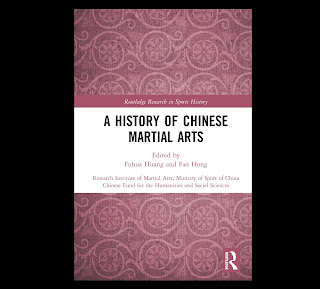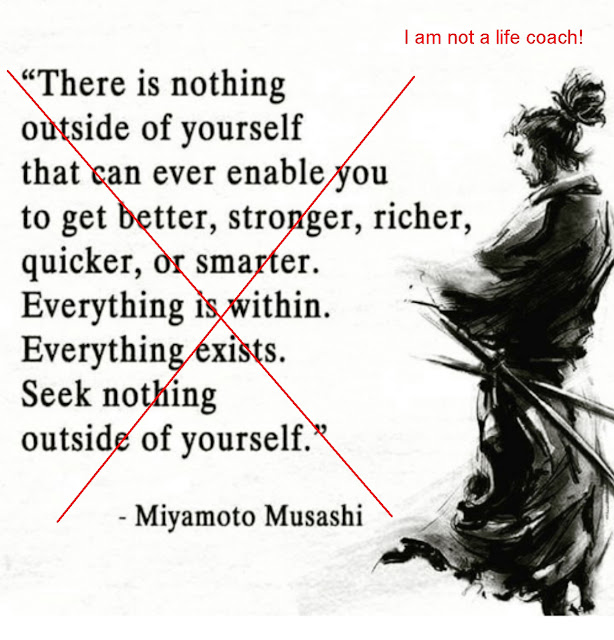Review of A History of Chinese Martial Arts
I'm pleased to share a post from Dr Jonathan Clements. You may remember Dr Clements from the story Best Book Winner: General Martial Arts Histories in English, for his book A Brief History of the Martial Arts.
Dr Clements joined Martial History Team today by virtue of contributing this thorough and insightful review. Welcome aboard!
Today he is sharing his thoughts on the book A History of Chinese Martial Arts, pictured above, published 21 September 2018.
Title: A History of Chinese Martial Arts
Editors: Huang Fuhua and Hong Fan
Publisher: Routledge
Format: Hardback, paperback, Kindle
Pages: 240, 6 x 9 inches
Cover Price: $140, $51, $36.99
ISBN: 978-1138645585
Content
Originally published in Chinese in 1997 by the People’s Sports Press, A History of Chinese Martial Arts credits editors Huang Fuhua and Hong Fan on its title page. They are, in fact, the English-language vectors for an entire council of scholars, many of them firmly co-opted with the “sportified” institutions of modern wushu, who collaborated a generation ago on an attempt to comprehensively describe the history of Chinese martial arts. This leads to a certain variation of tone among chapters by multiple authors of differing levels of skill and specialty, picked over by an advisory body of another dozen professors.
Pros
The book is thick with detail from Chinese sources, integrated with the material record. Kuang Wennan’s opening chapter, for example, mixes commentary from ancient books with archaeological evidence – stone axes painted on Neolithic pottery, and “war dances” preserved on ancient murals, which Kuang smartly exploits in search of clues as to the means of deployment of ancient weaponry. “A halberd might “hook one’s neck,” we are told in the Annals of Master Yan (a book itself unavailable in English until 2016), “and a sword can stab one’s heart.” Such documentary evidence is captivatingly deployed, offering rich detail on, for example, the nature of the long-range maces employed by charioteers, possibly more effective against horses than men, and the nature of Bronze Age archery competitions.
The “war dances” of the Bronze Age, which many scholars regard as a form of primitive kata, are approached here in a more diverse context – some sources, calling for “brandishing with indignant faces” make them sound more performative, like a Maori haka. Such rich citation of the documentary record continues in later chapters, and is of immense value to the historian of the martial arts in simply offering potential avenues for further research.
The first few chapters are less concerned with the martial arts than with the evolution of Chinese military technology – the slow curving of the sword into a sabre; the gradual replacement of the halberd with spears more suitable for use on horseback. When we reach Xi Yuntai’s chapter on the Ming dynasty, an explosion of actual evidence and materials makes for a more granular account of government martial exams, the hierarchies of military training in the imperial army, and the proliferation of rival schools.
Qing-era rebellions, of course, are of great interest to the historian of the martial arts, and Kang Gewu (an excellent authority, whose untranslated Practical Encyclopedia of Chinese Martial Arts has been of great use to me) is keen to stress the value to seditious organisations of framing themselves not as religions or secret societies, but as schools for exercise and health.
Kang also writes an entire chapter on martial arts during the Republican period, presenting an interesting narrative of the various spats over ideology and Western gymnastics, and the rise of the famous Jingwu athletics association and the Guoshu Academy – an early attempt to codify and muzzle the martial arts as a purely sporting endeavour. Hao Xinlian’s closing chapter admits the immense damage done to all aspects of Chinese society by the Cultural Revolution of 1966-76, and frames subsequent development as an exercise in forensic recovery. The resultant chapter offers fine detail on the reform and dissemination of martial arts throughout the modern Chinese educational system.
Cons
I have three major issues with this book, which might be best summarised as translation, trust, and tone.
Firstly, as noted above, this book is more than twenty years old, and the editors seem unaware that, for example, in the decades since it was published, Peter A. Lorge’s Chinese Martial Arts has covered very similar ground, and with a far higher level of precision and concision. Little thought appears to have been given to the implied reader of a translation into English – the degree to this would require further explication or elucidation. On many occasions, the authors refer off-handedly to terms such as the “Hongmen Banquet”, “Northern Wei” or “Xinhai Revolution”, secure in the knowledge that any Chinese reader will know exactly what they are talking about. And indeed, so should you if you have read any general history of China. But if you have not, certain parts of this book may degenerate into indecipherable noise. This, however, is a minor issue compared to the damage done to the text’s comprehensibility by the removal of the Chinese language.
Citations from classical books lack editions or page numbers – not an issue in Chinese, when an online search could root out the relevant phrase in moments, but forcing the foreign scholar to pore through page after page of entire chapters in Chinese in search of confirmation. Similarly, whereas a long list of multiple schools in Chinese carries within it the ability for the reader to determine nuances and styles from the characters that are being used, when simply written out in Roman letters, it’s just a bunch of words. Japanese authorities, when quoted, are lazily identified with the Chinese transcription of their names, rendering them unidentifiable without intensive detective work.
Secondly, and more crucially, the book’s multi-authored nature has led to a number of slips and solecisms that detract from its value. Some write breathlessly of wuxia and apocryphal tales; others get to grips with more exacting attention to practical detail and verifiable facts. However, citations can slip between fact and fiction without clear identification. I was intrigued by accounts in the Ming chapter of the readiness with which Chinese soldiers appropriated higher-quality Japanese swords from their pirate enemies, but having already been burned on several earlier occasions, I had to double-check in the footnotes to make sure that I wasn’t reading a tall tale from a novel, rather than a historical text. Once the book is out of the mists of the ancient past, and into more recent accounts of the martial arts, some of this fogginess dissipates, but as noted above, fictional and hence doubtful sources, the nature of which are immediately identifiable as fictional when one can see the original Chinese, are not necessarily obviously recognised as such in a Romanised text.
I also don’t agree with all of the claims made in the book – one section on the alleged martial prowess of Confucius seems to confuse his military record with that of his soldier father. In some chapters, there are signs of authors, presumably well-versed in practical martial arts, trying to wing it when it comes to the actual history part. The dates for the reign of the First Emperor are given both incorrectly and correctly; the Sui dynasty is proclaimed as an end to centuries of conflict, as if the Tang dynasty that followed it didn’t see a dozen wars. There are all sorts of over-simplifications, the sort of slips one might expect to find from a schoolboy rushing his homework with half an eye on Wikipedia, not from an academic publication that retails in hardback for $140. Bafflingly, the authors do not seem to know why the Japanese call wrestling “sumo” – the term is a direct calque of the Chinese for “paired shoving”, so it’s hardly a mystery.
Finally, such a fuzzy focus is compounded by a high level of nationalist vainglory, an essentialism that constantly kow-tows towards the requirements of scholarship within the People’s Republic. Sometimes, this is just empty bragging – mitigating “probablys” and “possiblys” are forgotten by the next paragraph; Chinese cavemen are awarded spears and clubs, as if such artefacts are not found all around the global archaeological record. Chinese people are credited with “upholding ethics and morality,” as if nobody else does.
Elsewhere, the text undermines its own arguments with outbursts of Han chauvinism. It makes the sweeping and unsupported claim that “martial arts were originally initiated by the Han people” [the dominant ethnic group in China] when it has already cited several vestigial ancient traditions among minorities, such as the Naxi and Dai, and goes to describe evidence of martial lore among lost or assimilated peoples such as the Dian and Huns. It largely ignores the martial accomplishments of the early, expansionist Qing dynasty (which doubled China’s size by conquering Xinjiang, Tibet and Mongolia), in favour of the victim-narrative of poor China facing all those foreign threats in the 19th century. Nor does its final chapter draw an obvious link between “public martial arts” post-1982 and the ‘exercise’ gatherings of the Qing-era underclass. Grannies assembling in the town square for a bit of taiqi might indeed be enthusiastic athletes, but may also be citizens enjoying the loophole this still offers for public assembly.
Conclusion and Rating: 3 stars out of 5
This is a fascinating book, not merely for the pointers it offers to the historian for new paths of enquiry into martial arts history, but for the glimpse it allows of the politicised obfuscations, fudges, and compromises that are sadly all too common in some corners of Chinese academia.
Jonathan Clements is the author of A Brief History of the Martial Arts.
If you like this article, check out our Facebook page, Instagram account, Twitter feed, and Amazon Wish List. Be devoted!




Comments
Post a Comment